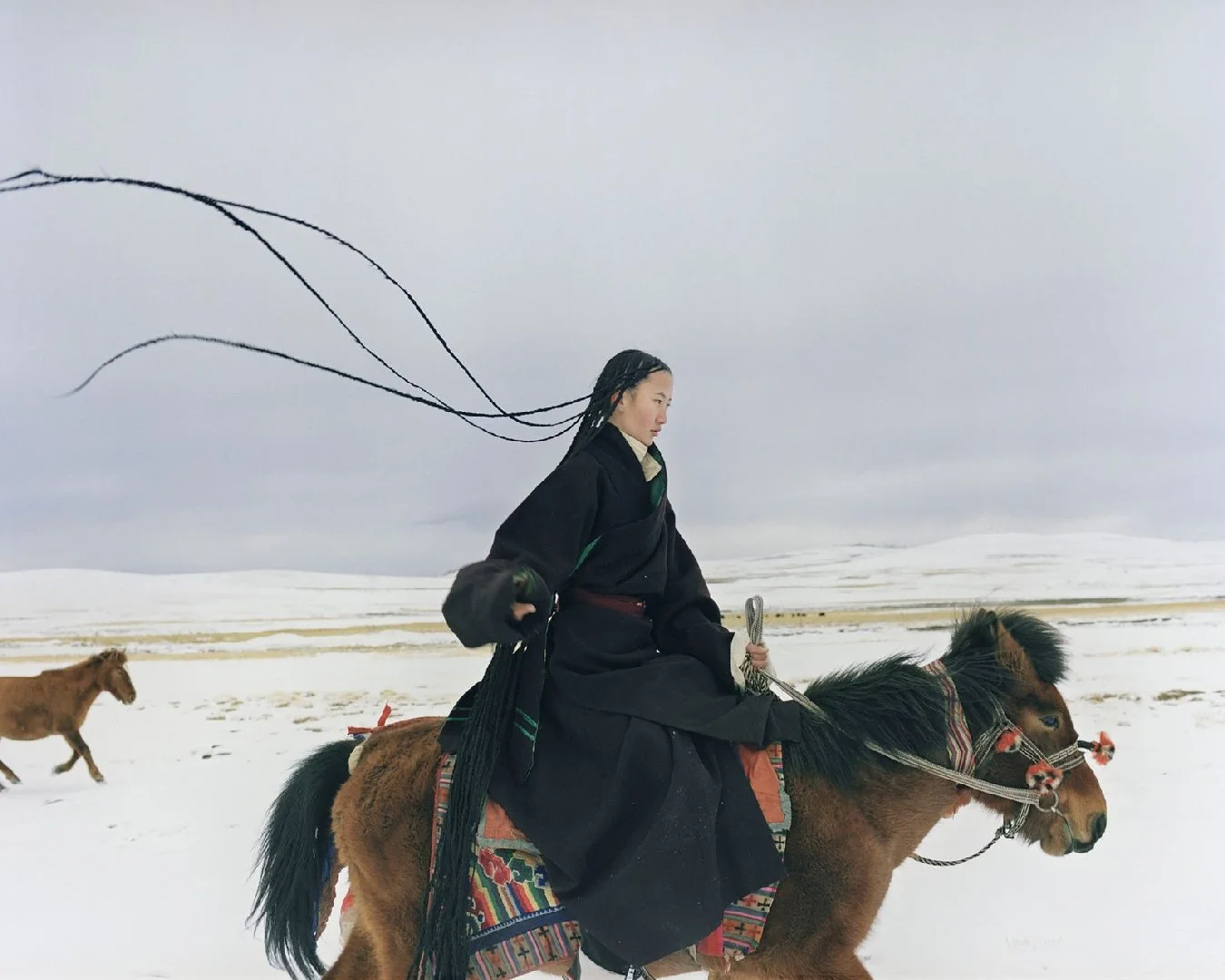“Our lives, a beat to Nature’s rhythm”: The Poetic Photos of Kin Chan Coedel
Words by Liv Franks
Photographer Kin Chan Coedel attached this poem (A Common Thread by Dechen Yeshi) to his work, DYAL THAK, and it is not hard to see why. The award-winning photo series that documents Tibetan life on the plateau is imbued with human connection—both with the natural world and among one another.
Combining vast shots of the verdant plateau with intimate portraiture, Kin Chan Coedel showcases the preservation of traditional customs. The photographer stated that he is “very much drawn to communities and cultures that live by ancient wisdom”; therefore, amidst growing regional pressures from neighbouring countries to modernise, Kin Chan Coedel instead chose to shine a spotlight on Ritoma Village. According to Coedel, he “immersed himself” within the female-led makers’ community of weavers, yarn-spinners, and wool-felters that use yak khullu (yarn) to produce textiles. In time, they “really welcomed” Coedel, who recalls the “intimate time” shared over breakfasts, lunches, and dinners.
Yak khullu produces a luxurious downy textile that offers insulation against the cold. It is taken from the underlayer of the yak, beneath its thick black coat. For some of his more editorial-seeming shots, Kin Chan Coedel worked in collaboration with Norlha—for example, his moonrise shot of Golo in Ritoma. The brand Norlha is the inaugural yak khullu atelier working on the plateau. All of its products are handcrafted by the local nomadic community, who continue the generations-long expertise for the ethical and sustainable atelier. The atelier has flourished so exponentially that it now employs 34% of the local community. Founder Kim Yeshi stated that the creation of Norlha has “brought a whole community into the markets of the 21st century” while still retaining the values and techniques of past generations.
Kin Chan Coedel has also travelled to Nagqu, Tibet, to exhibit the ancient tradition of hair braiding safeguarded by the women in the community. Communities mark major life events through hair braiding—whether births, marriages, or deaths. Coedel photographed women ranging from four-year-old Yixi Kangzhu to sixty-one-year-old Kang Zhucuo. For a photographer concerned with preserving cross-generational ties, it seems rather fitting.



A Common Thread
The plateau, a vastness
filled by nature,
its voice, its moods,
its shapes and hues,
small and vulnerable.
We are together, reminded ...
We take what it offers,
we will be grateful,
we will be inspired
we will be responsible.
Our lives, a beat to Nature’s rhythm.
Together, we are Nature’s chorus.
When Sunshine meets a light drizzle,
there is color, there is life,
there is laughter and celebration.
Nature’s melody is our smiles,
its wrath our weathered face,
cacophony.
Nature: a thread,
so strong and so delicate.
We weave it into a life,
a community,
together we are bound.
-Dechen Yeshi
This theme is not exclusively reserved for his DYAL THAK series. For instance, his 2023 Mongolia series also strives to capture communities that still cherish their ancient traditions. Whether it be Uligibaatar, the five-time Mongolian wrestling champion adorned in vivid silks, or Ujimqin in her beaded headdress, Kin Chan Coedel contrasts the proudly worn, vibrant textiles against the sweeping open skies and vast plains of lush vegetation. Ancient occupations like archery and shepherding are placed centre stage in this photo series that lauds the everyday routine of life.
The photographer, who splits his time between Paris and Shanghai, lived with local families while he worked. Witnessing the lives of the nomadic people of Inner Mongolia, whose occupations include goat farming and camel herding, allowed for a collection of photography that not only celebrates the symbiotic relationship between humanity and nature but also reminds us of the essential need to protect this relationship. This is perhaps most overtly demonstrated in a low-angled shot of young Emzeg and his baby goat, which he holds on top of his head—skin to fur—in a visual representation of the photographer’s message of harmony and preservation.












